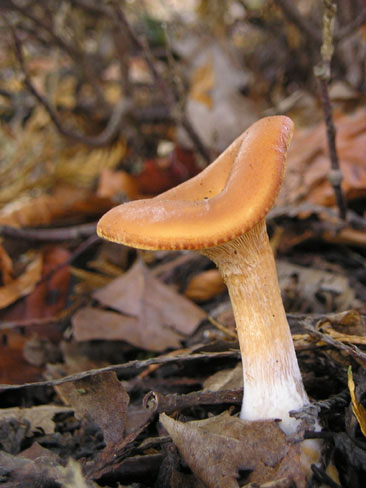Astromyxin - Star Jelly (Astral Jelly)
On Boxing Day I visited my family in Derbyshire. I have to thank my brother for pointing out this jelly substance on the lawn whilst letting out the dog
The weather had recently been very wet and about 5 separate blobs of this transparent jelly appeared on the lawn. Each blob (irregular margin) measured about 5-10 cm in diameter. It looked like frogspawn but without the black tadpole, felt like frogspawn, and had no odour. Also, I noted, it was not attached in anyway and could be scooped up intact.
It looked like a fungus that grows on dead and rotting branches called Tremella mesenterica and crossed my mind that perhaps it had fallen from a branch onto the lawn, although that would be a rare. However, there were no trees nearby. I then wondered if it could be a slime mould (a simple fungus).
I've subsequently done some research and here is more about this Star Jelly.
Dr David Genny a fungi expert with the Scottish Natural Heritage leans towards a Slime Mould which is a single cell organism.
The Scotland Outdoor Teams sent a sample to the Royal Botanical Gardens in Edinburgh. It was deduced that it was neither animal or plant. Some green algae cells were found within the jelly.
Dr Hans Sluiman confirmed that there were green algae cells called diatoms contained within the jelly but from the sample he deduced it was neither animal or plant. Another sample was then given to Dr Andy Taylor of the McCauley Institute who also examined the jelly under a microscope and found possible fungal filaments, bacteria and unfertilised eggs which were though to be from a frog. Also some DNA was extracted for analysis and then compared with a National Database where a match with a mould was found but this was thought not to be the answer as it was growing on the jelly. After looking at all the various possibilities Taylor opted for the amphibian option. This is a theory that many other experts concur with who suggest that the jelly consists of the remains of the oviducts of frogs which from about Autumn are full of spawn. The frogs have then been predated and the oviducts left, possibly because the predators found it distasteful?
So there you go.
Below are two photographs taken my myself on Boxing Day 2021.
 |
| Close-up of Star Jelly |
 |
| Group of Star Jelly |








